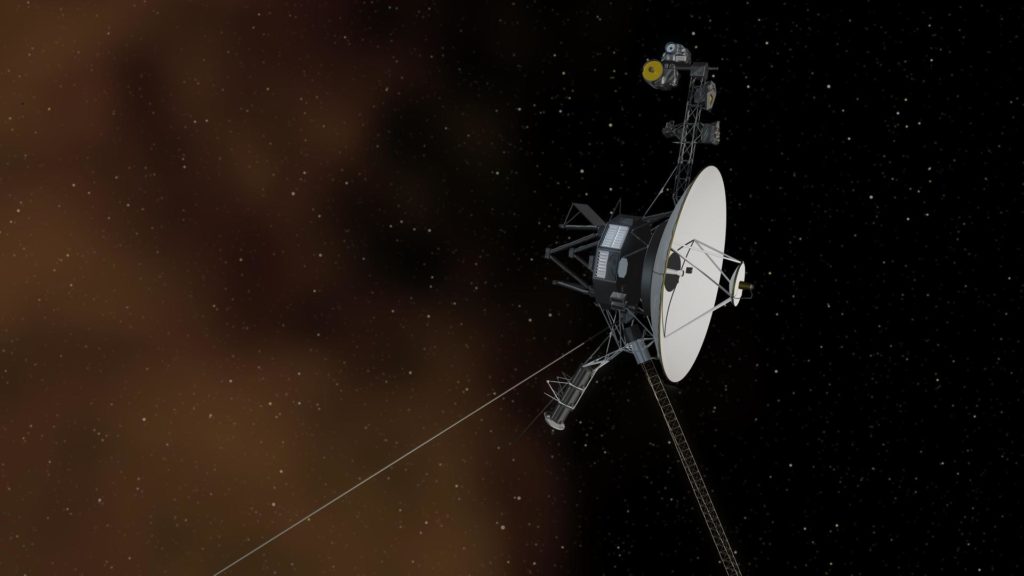Voyager 1, a magnificent spacecraft that was first sent into space by NASA in 1977, has since become one of the most acclaimed explorers in human history. Its travels have brought it to some of the most remote parts of our solar system, where it has returned with priceless information and magnificent photographs of faraway planets and other astronomical bodies. However, even the most spectacular missions have their share of difficulties, and Voyager 1 is no exception to this rule. This article delves into the problems that manifested themselves during the mission of this legendary spacecraft and investigates what went wrong with it.
- Obstacles Presented by the Power Supply: During the course of its voyage, one of the key worries that surfaced regarding Voyager 1 was its diminishing power supply. The radioisotope thermoelectric generators (RTGs), which are essential to the operation of the spaceship, are responsible for converting the heat produced by decaying plutonium-238 into energy. The power output has gradually decreased over the course of time as a result of the decay of the plutonium-238. As a consequence of this, some sensors and systems that were not critical have been shut off in order to preserve power, which has the effect of reducing the spacecraft’s capabilities.
- Restrictions on Communication Keeping in contact with the Voyager 1 spacecraft has proven to be a difficult task. Because the spacecraft is currently more than 22.7 billion kilometers (14 billion miles) away from Earth, the signal is very faint and it takes more than 21 hours to arrive at our location. In addition, the signal strength is continuously deteriorating as Voyager 1 travels farther into interstellar space. Because of these communication restrictions, it is becoming progressively more difficult to get data and updates from the spacecraft.
- Deteriorating Components: Voyager 1 was not intended to carry out a protracted mission of this scale when it was first developed. Its structures, systems, and components were designed with the goal of having a lifespan of around five years. The spacecraft, on the other hand, has been in operation for more than forty years at this point. The aging components have suffered significant damage as a result of the harsh conditions of space, which include exposure to radiation, severe temperatures, and hits from micrometeoroids. As a direct consequence of this, some of the subsystems and instruments have encountered failures or malfunctions.
- Deteriorating functioning of Scientific Instruments As Voyager 1 continues its journey, the functioning of some of its scientific instruments has degraded to the point that they have been completely shut down. For example, the equipment that was supposed to measure high-energy particles in space, known as the cosmic ray instrument, has been shut off because of power restrictions. The plasma wave apparatus, which is employed for the investigation of electromagnetic waves, has also encountered certain difficulties. Because of these constraints, the spacecraft is unable to collect certain kinds of scientific data as effectively as it could have.
- Restricted Access to Fuel:
The limited amount of fuel that Voyager 1 has is another aspect that contributes to the difficulties it is experiencing. The spacecraft is able to orient itself and keep its course thanks to a set of very modest thrusters that are referred to as trajectory correction maneuver (TCM) thrusters. 2017 was the year that NASA engineers made the discovery that the primary thrusters were failing, which led to a greater reliance on the backup thrusters. The persistent employment of these backup thrusters has imposed additional strain on the limited fuel reserves, which has raised concerns over potential future course adjustments.
The conclusion is that Voyager 1 has exceeded all expectations and is still making ground-breaking discoveries even after its launch over three decades ago. Despite this, the difficulties it is encountering are a demonstration of the tremendous complexity of long-duration space missions. This courageous spacecraft has had to overcome a number of obstacles, some of which include restrictions on its power source, difficulties with communication, deteriorating components, decreasing scientific instrumentation, and a limited quantity of fuel. In spite of these obstacles, Voyager 1 continued on its mission, which resulted in an amazing look into the wonders of the universe and paved the path for subsequent efforts to explore space.
![]()
